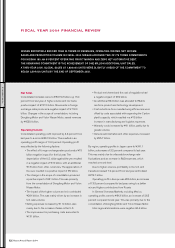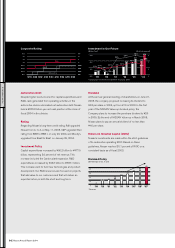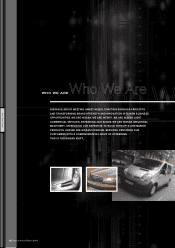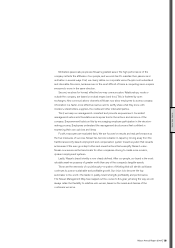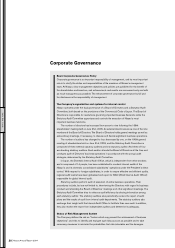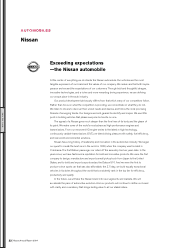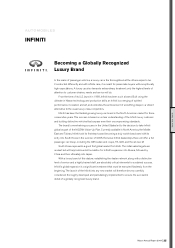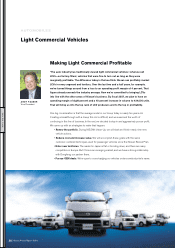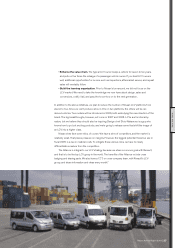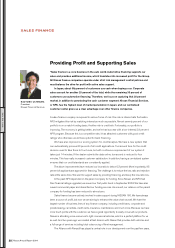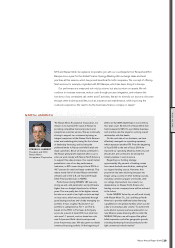Nissan 2005 Annual Report Download - page 23
Download and view the complete annual report
Please find page 23 of the 2005 Nissan annual report below. You can navigate through the pages in the report by either clicking on the pages listed below, or by using the keyword search tool below to find specific information within the annual report.
Nissan Annual Report 2004 21
Risk Management System
The Company has been evaluating risk of the Company and the Nissan’s Group from
various points of view and has been considering the appropriate control system and
methodology. A risk management team established in the Financial Department has worked
with several global sections since 2004, sorted out the business risks, and prioritized them
based on the probabilities, impacts, and relevant control level. Directors in charge were
appointed and they have been taking concrete measures against the risks for which actions
are required.
Furthermore, since April 2004, the Company has established Intellectual Property
Rights Management Department for the purpose of protecting intellectual property rights in
specific areas, strengthening activities to protect Nissan’s intellectual property rights, and
abstracting new intellectual property rights. And the department has been performing
various activities to protect and create Nissan Brand.
Since the fiscal year beginning April 1, 2005, the scope of risk management has been
expanded to address risks which are more strategic or those relate to business processes
in addition to the original hazard risks. Functions or Departments, which operate risk control,
report the status through the normal reporting lines and EC (Executive Committee) directly
monitors the risk that must be controlled on corporate level.
In 2001, the Company established “Nissan Global Code of Conduct” and distributed it
to employees of domestic and foreign Group companies. Moreover, the Company
established “Nissan Code of Conduct (Japanese Edition) ~Our Promises~” and publicized
it which should be applied to employees of domestic Group companies. This has been
gradually implemented by the Group companies.
The Company emphasizes education of employees based on the idea that written
conduct code must be understood by all employees and reflected to their actions. All
employees must take learning programs by E-learning or VTR, and sign confirmations
regarding code of conduct after finishing the programs. The confirmations have already
been received from almost every employee, and compliance of corporate ethics has been
penetrated into the Nissan group.
Furthermore, Global Compliance Committee is established in order to review the status
of compliance with the code of conduct and ensure that the code is fully complied.
Managing Director in charge of Human Resource is appointed as Global Compliance
Officer (GCO) and the chairman of regional compliance committees established in each
area such as Japan, North America, Europe and Global Overseas Market. Those
committees promote the improvement of code of conduct, resolution of issues and
enlightenment activities. “Easy Voice System”, which was deployed in 2002 as a system
that employees can freely communicate their opinions and demands to the companies, can
acquaint violation of compliance and behaviors possibly resulting in violation and also
contribute to improve business operations and to develop corporate culture emphasizing to
comply corporate ethics.
WHO WE ARE



